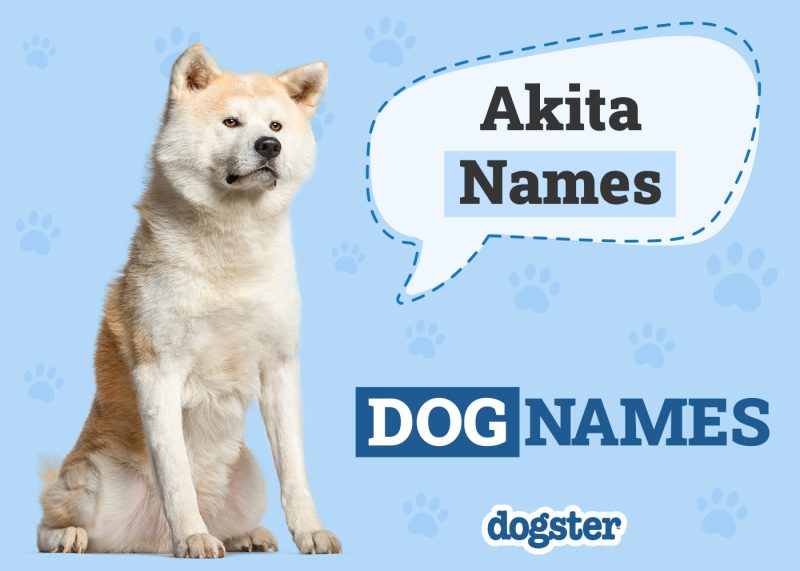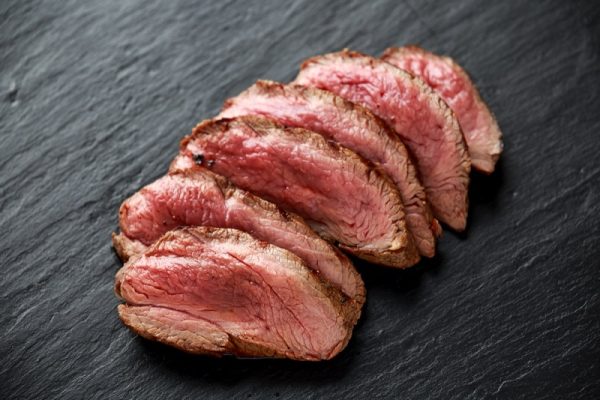In this article
Finding a dog food that’s a great fit for your four-legged friend is a struggle. There are so many brands available, so many ingredients, so much confusion…the list goes on. So, how does a dog owner know which dog foods are ideal and which to avoid?
You’re in the right place to start on your journey to the best dog food for your pup because we’ve put together a quick comparison of two popular brands—Royal Canin and Kirkland. All you need to do is continue reading to find out where the dog foods come from, their ingredients, and whether they’ve had recalls.

A Sneak Peek at the Winner: Kirkland
| Rating | Image | Product | Details | |
|---|---|---|---|---|
| Our Favorite |

|
Kirkland Signature Adult Formula |
|
Check Price |
| Runner-Up |

|
Royal Canin Veterinary Diet Hydrolyzed Protein |
|
Check Price |
Before we start, here’s a sneak peek at our winner, Kirkland! Kirkland’s food contains higher-quality proteins than Royal Canin’s (and seems to have better ingredients overall). The biggest concern is the addition of peas in several of their recipes, but more research is needed to confirm peas are linked to heart disease in dogs.
Our two favorite products from them are Kirkland Signature Adult Formula Dog Food and Kirkland Signature Nature’s Dog Food. Read on to find out why!

About Royal Canin
Royal Canin was created in France in 1968 by Jean Cathary. Its U.S. launch occurred in 1985.
Nutrition & Health
Jean Cathary was a veterinarian for horses and bulls before he started Royal Canin. It was through that work that he came to believe that nutrition could have a considerable impact on an animal’s health. Thus, Royal Canin was born.
Since then, Royal Canin has studied (and continues to study) the unique health needs of dogs down to the smallest detail and learned how even small nutritional changes to your pet’s diet can have significant results. This continued study enables Royal Canin to make recipes designed precisely for individual dogs according to breed and size. Each recipe is specially formulated, giving a pet the exact minerals, vitamins, antioxidants, prebiotics, fiber, and more they require. They also collaborate with various experts, including veterinary scientists, to deliver outstanding results.
- The 2003 launch of the VDiet recipe arose from a collaboration between the Waltham Centre for Pet Nutrition and Royal Canin Research.
- The 2005 obesity clinic was also created in collaboration with the Waltham Centre for Pet Nutrition.
- The 2014 launch of GHA is a test that scans a dog’s DNA and gives vets the info they need from the genetic code to create customized health plans.
Breed & Size Specific
One of the ways Royal Canin produces food that meets each dog’s specific nutritional needs is by making it breed and size-specific. Their launch of AGR in 1980 was the first dog food designed for large breed puppies and served as a reference for others for the next 15 years. It wasn’t until 1997 that they introduced size-specific nutrition to the world (again, the first of its kind) based on the size and age of a dog.
Their first breed-specific food came a couple of years later, in 1999, when they designed a formula that was built to be simpler for Persian cats to eat with their jaw structure while also meeting their health needs. Breed-specific food for dogs came around in 2002 with the launch of a formula for Mini Yorkshire Terriers.
What does it mean that a food is breed or size-specific? Think about German Shepherds, who are known for being strong but also for having sensitive stomachs. The Royal Canin food for them is made with fiber and proteins that are highly digestible.
Some dogs have shorter snouts, which can make eating large pieces of kibble difficult. However, Royal Canin’s Breed and size-specific formulas are ideal for them.

Ingredients
Royal Canin’s ingredients include more meat by-products or meat by-product meals than real meat. They explain that this allows them to maintain their nutrient standards while still being able to customize foods and ensure a sustainable supply. Meat by-products and meat by-product meals are perfectly safe and nutritious, but if you’re looking for dog food with meat as the first ingredient, it will be difficult to find here.
Also, a few of the Royal Canin recipes contain peas or legumes in some form, which have been linked to heart disease in dogs.
- Breed & size specific nutrition
- Years of scientific health research
- On the pricier side
- Uses meat meal rather than whole meat

About Kirkland
If you’re a Costco fan, you’ve likely seen Kirkland dog food in their stores as part of the Costco brand line. The food is made by Diamond Pet Foods in factories throughout the U.S.
Nutrition & Health
Kirkland dog food may not have years of scientific research into the health behind it, but it produces nutritious formulas. It has different foods for each stage of life your pup is in and meets their nutritional needs for that life stage by including probiotics, essential vitamins and minerals, amino acids, omega fatty acids, glucosamine, chondroitin, fiber, and more. Overall, Kirkland is a nutritionally sound brand with formulas that meet AAFCO requirements for every stage of life and offer your dog all they need to stay healthy.
Breed & Size Specific
When it comes to foods created for specific breeds or sizes, Kirkland is lacking. Whereas Royal Canin has dog food for different breeds and sizes, Kirkland only has a single formula for small breeds. Their other recipe lines are targeted toward puppies, adults, and seniors. They also have a weight management formula.
If you’re looking to feed your dog according to their breed or size, you’ll do better with Royal Canin.

Ingredients
Kirkland does fare a bit better than Royal Canin regarding the ingredients used. They use real meat as the first ingredient in most, if not all, recipes. However, they use by-products and meat meals to bulk things out.
Kirkland also uses peas in some recipes. They have a grain-free dog food line for pups with grain intolerances. However, that isn’t very common in dogs—your pup is more likely to be sensitive to the protein in their food than the grains—so you might want to speak with your vet before going the grain-free route. Grains provide fiber that improves their digestive health and carbs to keep them energetic.
- Higher quality protein
- Nutritionally sound
- Excellent price point
- Can only buy at Costco
- Has peas in some recipes

The 3 Most Popular Royal Canin Dog Food Recipes
Below you’ll find a quick rundown of three of the most popular Royal Canin dog food recipes available.
1. Royal Canin Veterinary Diet Hydrolyzed Protein Dog Food

This hydrolyzed protein food is ideal for dogs that have sensitivities to common proteins. Hydrolyzed proteins (soy in this case) are more easily digested than regular proteins, making them less likely to cause an allergic reaction. The formula also has a specialized blend of fibers designed to boost your pup’s digestive health, so those prone to upset stomachs and diarrhea should see improvement.
This Royal Canin food is free of peas, so you don’t need to be concerned about your pet’s heart health.
- Hydrolyzed protein for easier digestion
- Great for those with food sensitivities
- Pea-free
- Contains chicken fat, which may not be suitable for dogs with chicken allergies
2. Royal Canin Veterinary Diet Gastrointestinal Low-Fat

Though this Royal Canin wet dog food has pork liver, pork plasma, and pork by-products, it only contains 6% crude protein. On the flip side, it is designed to be highly digestible for pups who have difficulty digesting fats. It contains a host of dietary fibers and prebiotics to further aid in healthier digestion.
Then, there’s the S/O Index that helps reduce the risk of crystals forming in the bladder by creating a hostile environment. If your dog is prone to UTIs, this food is an excellent choice.
- Low-fat
- Helps reduce the risk of crystal formation in the bladder
- Improves digestion
- Low in protein
- May not contain enough calories for larger breeds
3. Royal Canin Veterinary Diet Urinary SO Dog Food

If your pet has UTIs frequently, this dog food could help. It contains less magnesium than other foods to keep stones from forming and dissolve stones that are already there. It also increases how much urine your pet releases to rid the body of excess minerals that cause stones in the first place.
It also has 17% crude protein to keep the rest of the body healthy and strong. Plus, it contains plenty of grains to up the fiber content of your pet’s diet.
- Great for dogs who deal with urinary tract issues
- High protein
- Pea-free
- Not suitable for all dogs
- Pricey

The 3 Most Popular Kirkland Dog Food Recipes
Here’s a look at some of the most popular Kirkland dog food recipes from Costco.
1. Kirkland Signature Adult Formula

This adult formula contains real chicken as the first ingredient for a high-quality protein, then boosts the amount of protein by adding eggs. All in all, there’s 26% crude protein in this recipe. Brown rice is included as a highly digestible carb, and the food’s taste is enriched with veggies, fruits, and herbs.
There’s also a boost of probiotics and prebiotic fiber to improve your pup’s digestion, while glucosamine and chondroitin support the health of the joints.
- Chicken as the main ingredient
- High protein
- Good for digestive health
- Supports healthy joints
- Contains peas
2. Kirkland Signature Nature’s Domain Dog Food

If you want a formula that doesn’t contain chicken or turkey, you’re in luck with this one since it has salmon meal instead. However, salmon meal is all it has; there’s no whole salmon. The salmon meal provides 24% crude protein, though, which is excellent.
This is also one of Kirkland’s grain-free recipes. Not all dogs require grain-free foods, so talk with your vet before starting a grain-free diet. The Kirkland Salmon Meal & Sweet Potato recipe also provides your pet with digestive support through probiotics and prebiotic fibers, like chicory root.
- Good for digestive health
- High protein
- Not all dogs need grain-free diets
- Contains peas
3. Kirkland Signature Small Dog Formula

This is one of Kirkland’s small breed-specific recipes.
With real chicken as the top ingredient and a whopping 27% crude protein, this Kirkland dog food provides your pup with a lot of high-quality protein. It also contains prebiotic and probiotic fiber sources designed to help those with sensitive stomachs.
However, the formula has peas, so this might not be the best fit if that’s a concern.
- High protein
- Chicken as first ingredient
- Good for sensitive stomachs
- Small breed specific
- Has peas
- Not suitable for larger breeds

Recall History of Royal Canin and Kirkland
Regarding food recalls, Royal Canin has had three. The first was in 2006 when the company recalled six Veterinary Diet recipes due to elevated levels of D3. The next was in April 2007, during the melamine scare, when various dry dog foods were recalled.
Finally, the last recall was in May of the same year, when they recalled more foods for the same contaminant. This time, 23 recipes were recalled for possible melamine contamination. As for Kirkland, they have only had two recalls. The first was in April 2007 for, you guessed it, the melamine scare. However, Kirkland only recalled a single wet food recipe.
Their biggest recall came in May 2012, and it was due to possible salmonella contamination. This time, seven of their recipes were recalled.

Royal Canin vs Kirkland Comparison
Now that we’ve covered the basics, it’s time to go head-to-head on the comparison between Royal Canin and Kirkland.
Taste
Royal Canin doesn’t list the flavor of the food on the bag, so you cannot know what it might taste like until you read the ingredient list. With Kirkland, at least, you can look at the name on the bag to determine the flavor, whether it’s salmon meal, chicken, or something else.

Nutritional Value
Both brands meet the AAFCO nutritional requirements for dog food. However, while having recipes researched to target certain breeds and dog sizes, Royal Canin lacks high-quality proteins in their meals, as none seem to have real meat in them. Many of their recipes also don’t contain probiotics, which are known to improve the health of the gut. However, most of Royal Canin’s recipes are protein-rich and can help with specific health issues (depending on the recipe).
Kirkland seems to come out a bit ahead of Royal Canin on the nutritional front since they use actual meat as the main ingredient for most of their recipes (but not all!). This ensures your pup gets a high-quality protein instead of a low-quality one. Kirkland’s recipes are also higher in protein. They also contain plenty of probiotics and prebiotics to aid digestion and gut health. However, many recipes include peas in some form, which may be linked to heart disease in dogs.
Price
Kirkland is the clear winner when it comes to affordability. Royal Canin only sells food in smaller bags, which can get expensive. Because Kirkland is a Costco brand, it sells much larger bags of dog food, so you can buy it in bulk and for a much lower price.
Selection
Regarding the variety of formulas, Royal Canin is far ahead with its wealth of specialized diets. Because Kirkland only has one size-specific food, with the rest going according to life stage or weight management, they have far fewer options.

Overall
Royal Canin offers plenty of recipes specially designed for dogs. However, its meals don’t contain high-quality proteins or additions such as probiotics, and they’re also incredibly pricey. On the other hand, Kirkland provides your pup with high-quality proteins and probiotics but has a much smaller selection from which to choose. Several of their dog foods also contain peas, which can be iffy. But they’re also a much cheaper brand that still has great ingredients (for the most part).
It mostly boils down to whether you want feed your pet a food designed just for them that’s a bit lower quality or a food that’s more generalized that has better quality ingredients but also contains peas.

In Conclusion
Despite adding peas to some of their recipes, Kirkland offers your dog much higher quality protein and better ingredients. And because they make food for all life stages, there’s something there for everyone.
That isn’t to say that Royal Canin doesn’t have its advantages. Their targeted recipes meet your dog’s nutritional needs exactly, but they also don’t use real meat, so the protein quality is lower. They’re also much more expensive than Kirkland. So, Kirkland comes out just a bit ahead, but it’s pretty close to a tie with these two brands.





















